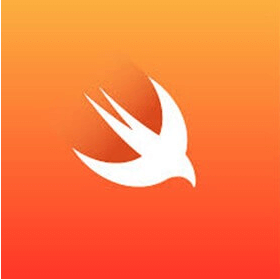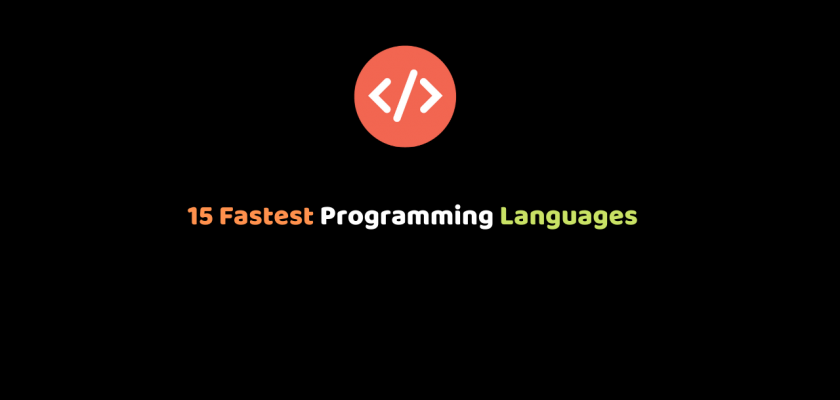One can’t imagine what programming would have looked and felt like if one had to memorize a series of 0’s and 1’s to code computer instructions.
Hence, the advent of what we know as programming languages, which are defined vocabulary for writing computer instruction.
With this in mind, you wouldn’t agree any less with the importance and significant possibilities of programming languages.
There are numerous programming languages, some more popular than others.
Although every language has peculiarities enabling it for different projects and functionality, you are faced with choosing a programming language over another, sometimes.
However, when choosing a programming language over another, a lot of factors are considered.
More so, such considered parameters could include; ease of programming, availability of frameworks, program readability, availability of libraries, and robustness.
please note this article only compiles the list of fastest programming languages according to data collected from different sources, The fastest execution of code slowly depends upon the optimization of source code, programming language closest to machine code are generally faster than others. being top on this list doesn’t mean it’s faster than other programming languages.
Important note
Regardless, let’s examine the speed of execution in this article with these 15 Fast Programming Languages.
Java
In the court of public opinion, Java is considered the best and most common programming language. While more commonly used for android development and client-server applications, Java is preferred by many for its performance and speed. Additionally, the concept of a Write once, Read anywhere language is the real deal. Simply put, you can write your code once and use it on any Java platform.
Pros
- It is very popular
- It has a lot of extensions and platforms
Cons
- It is relatively expensive
- It is comparatively difficult to build and compile.
JavaScript
Recently, with growing trends and increasing the development of World Wide Web content, Javascript has found a sweet spot as an industry favorite. Even more, as a scripting language, Javascript works well with HTML and CSS in web development. It has also found use in non-web system programming.
Pros
- It is viable for creating extended web functionality
- It is client-side executable
Cons
- It has variations in its rendering
- It has a relatively weak security
Python
While Python is a dynamic high-level programming language, it was intended for general-purpose. It is invaluable for web and android development, with high readability.
Pros
- Great automation
- It has a lot of available libraries
Cons
- It is comparatively slow
C++
Like Python, C++ is a general-purpose programming language. Though a mid-level language, it is also object-oriented. Additionally, C++ has a vast and valuable function library.
Pros
- It has an abstraction layer
- It allows object-oriented programming
Cons
- It is susceptible to the second system effect
- It is relatively hard to maintain
Go
Go programming language is also known as golang. It is developed in 2009 by Robert Griesemer, Rob Pike, and Ken Thompson. It provides excellent support for multithreading.

Pros
- It is ideal for making single-page applications
- Fast as it compiled to machine code
- Cleaner syntax makes it very easy to learn
- Backed by Google
- The extensive library offers a range of built-in functionality for working with primitive types
Cons
- Lacks versatility
- Absence of a machine makes complex programs less efficient
- Implicit interfaces
- No GUI library
- Underprivileged library support
Swift
Apple created it in July 2010 to avoid iOS developers from working with objective-C. Apple iPhone with the help of Swift has made a significant share in the market. It is giving competition to Android.

Pros
- Developed by Apple
- Very easy to add new features
- It is fast compared to other programming languages such as Python and Objective-C
- Possible to integrate server-side swift with technology
- The English-like syntax makes it readable
Cons
- No support for the legacy projects and only iOS7 can use it
- Limited community support
- It is a bit unstable because it is a new arrival on the programming scene
Ruby
Ruby is one of the interpreted programming languages designed for simplicity and to improve productivity. It is a general-purpose and high-level language, nonetheless. Although it uses garbage collection, it is equally dynamic.
Pros
It is excellent for coding web applications
Cons
- It is not great for GUI
- Relatively slow
- Shows low scalability
PHP
Like Javascript, PHP is a popular scripting language commonly used for creating dynamic web pages. More so, these pages can be useful in the transfer and submission of information on the web.
Pros
- Great for web application development
- It is open source
- It is easy
Cons
- It has a poor design
- It is quite slow
MatLab
Meanwhile, meet the only programming language on this list that uses mathematical notations to represent some of its objectives. Equally, built in a user-friendly environment, MatLab utilizes a juxtaposed integration of programming and computing. The programming language has gained more traction in recent times due to swelling attention in analysis and statistics.
Pros
- Offers good support
- It has great documentation
Cons
- It has a few open-source codes
- It is comparatively expensive
- Can not integrate into web services
C#
While intended as a common language infrastructure programming language, C# is component and object-oriented.
Though, considered as a close rival of Java, it is preferred for developing applications on Windows.
Pros
- Works with intermediate language
- It supports Multithreading or multitasking
Cons
- Allows pointers in blocks, which is unsafe
- It is case sensitive
R Programming Language
R like MatLab is a programming language for statistics and analytics computing. However, it finds wide use in the engineering of statistical software for data mining. Additionally, it is has a free software environment under the GNU General Public License.
Pros
- Useful in Statistics
- It has great charting properties
Cons
- Less secure
- Imposes limits to memory allocation.
PERL
Similarly, PERL, originally Practical Extraction and Reporting Language, is a dynamic high-level programming language. Despite its usefulness as a scripting language, it is not intended for web development.
Pros
- It has the Comprehensive PERL Archive Network (CPAN) repository
- Very useful for text parsing
- It is open source
Cons
- Poor object orientation
- Not scalable
- It is difficult to handle bugs on PERL
Visual Basic
Though, a language originally designed for ease of use and learning. Like C#, Visual Basic is an object and component-oriented programming language, still. While it is implemented on the .NET framework and designed for developing type-safe object-oriented programs, it is also used mostly for writing Windows applications.
Pros
- It is very easy to use
- Very useful for GUI
Cons
- It has memory constraints
Objective C
A step up on the C language with the addition of objects, hence its name. Nonetheless, objective C is a general-purpose programming language for object-oriented programming.
Pros
- It is stable
- Allows object-oriented programming
Cons
- Not open source
- Used only for IOS based platforms
Assembly Language
Evidently, after the time of the Machine Level Language was the Assembly Language. Though a low-level programming language, it addresses crucial performance concerns by direct hardware management.
Pros
- Creates fast and small programs
- Access to registers
- It has an optimized compiler that renders high-level languages
Cons
- Predisposed to bugs
- Quite difficult to read
- Does not allow abstraction
Conclusion
When coding a large program, it may become relevant to choose best-fit and compatible languages for the different components of the program.
Ultimately, In the real world of programming, speed is neither the most important nor the only factor to consider when choosing a programming language, anyway. Also considered are factors like ease of programming, availability of function libraries, code safety, scalability, memory use, and program robustness.


